J-STORIES - Raw silk has been produced in Japan since ancient times. But today, as the world’s population continues to grow and a sense of crisis over global warming builds, there is a reassessment of its value as a material environmentally friendly and safe for the body. Silk is used not just for clothing but also for medical sutures, cosmetics, and in foods as a next-generation protein.
United Silk Company, based in the southern Japanese city of Matsuyama, is working to find uses for its silk in new industries around the world.
According to the company’s President & CEO, Takashi Kawai, “In Europe and the US, there is a movement toward ending the use of synthetic and petroleum-derived fibers that cause CO2 emissions, and the trend is toward natural materials.”
“On the other hand, the production of the raw materials for natural fibers of wool and cotton, i.e., sheep and raw cotton, is not expected to increase significantly, so the question is: how much longer will the supply of natural fibers be sufficient to meet the needs of the world's growing population?”
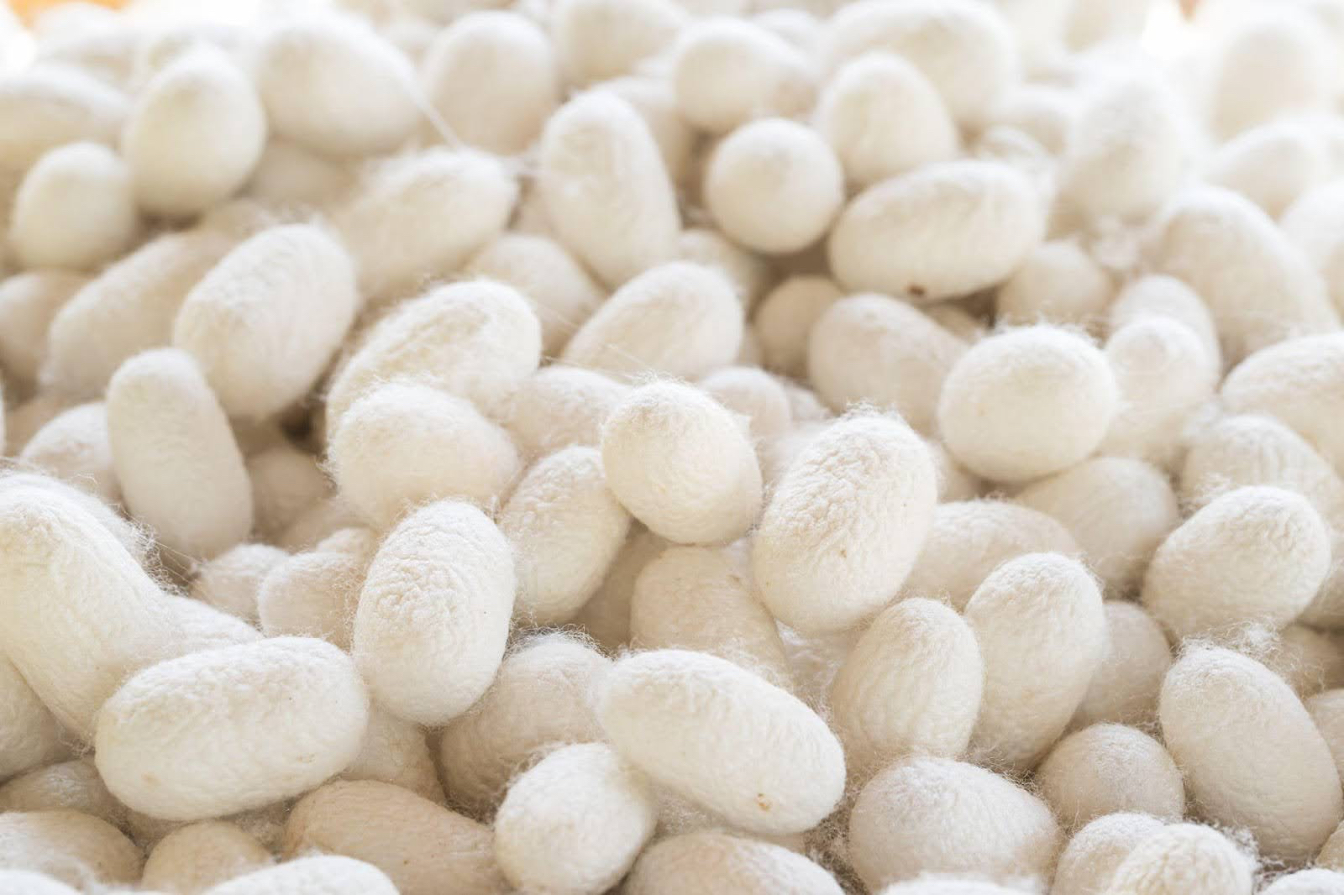
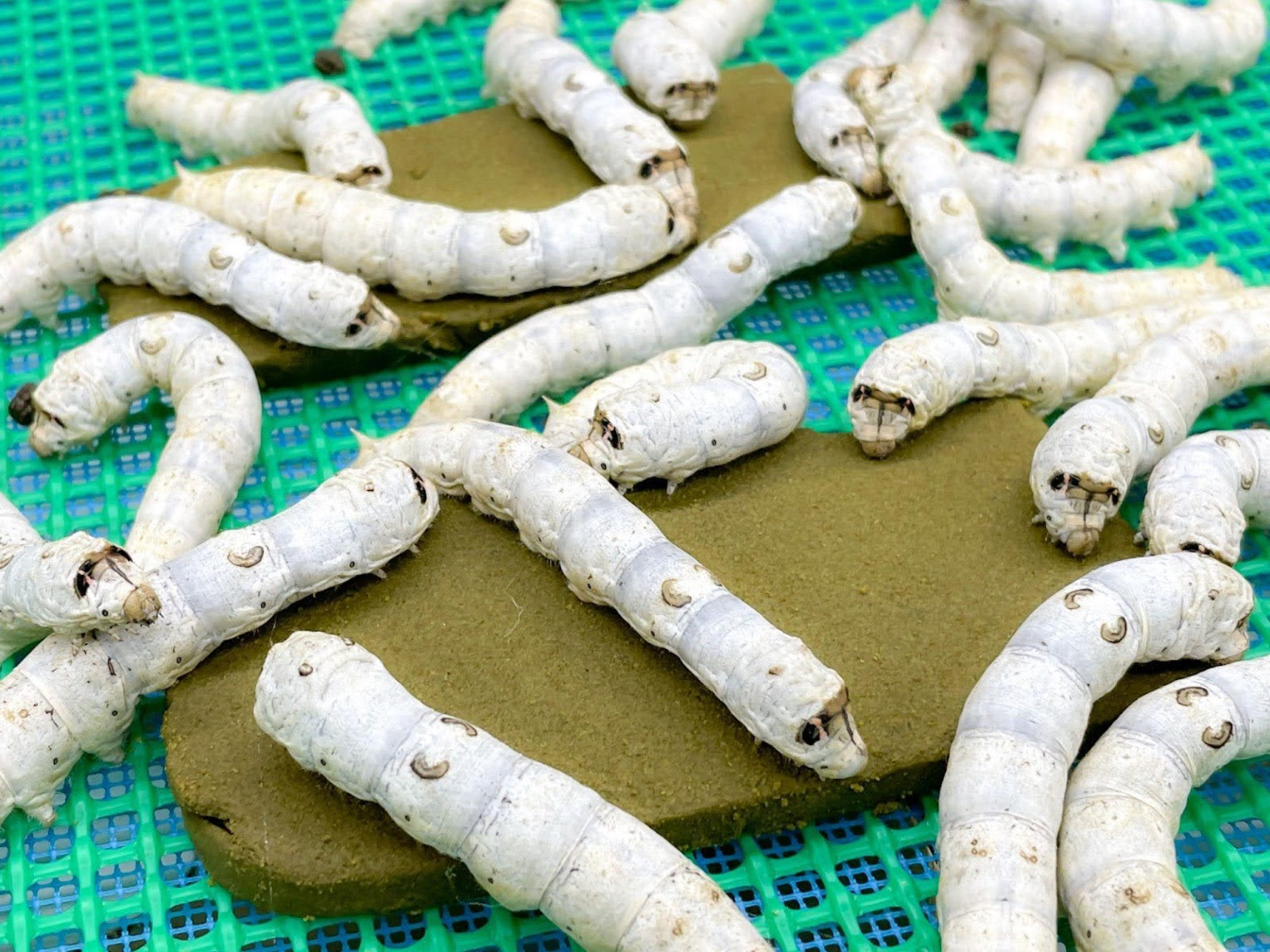
This growing demand for silks is invigorating a Japanese sericulture industry that is in decline and even faces the threat of extinction. United Silk recognizes that the industry has been held back by inefficient production and a dependence on traditional artisan skills. That’s why the company is working on a system of silkworm mass production and supply that incorporates digital transformation (DX).
Kawai stresses silk’s potential, saying, "Silk cocoons could be mass-produced in Japan using technology such as AI and through the mechanization and industrialization of silk production. If sufficient silk can be produced to meet global needs, silk has the hidden potential to solve the supply crisis for textiles and food products.”
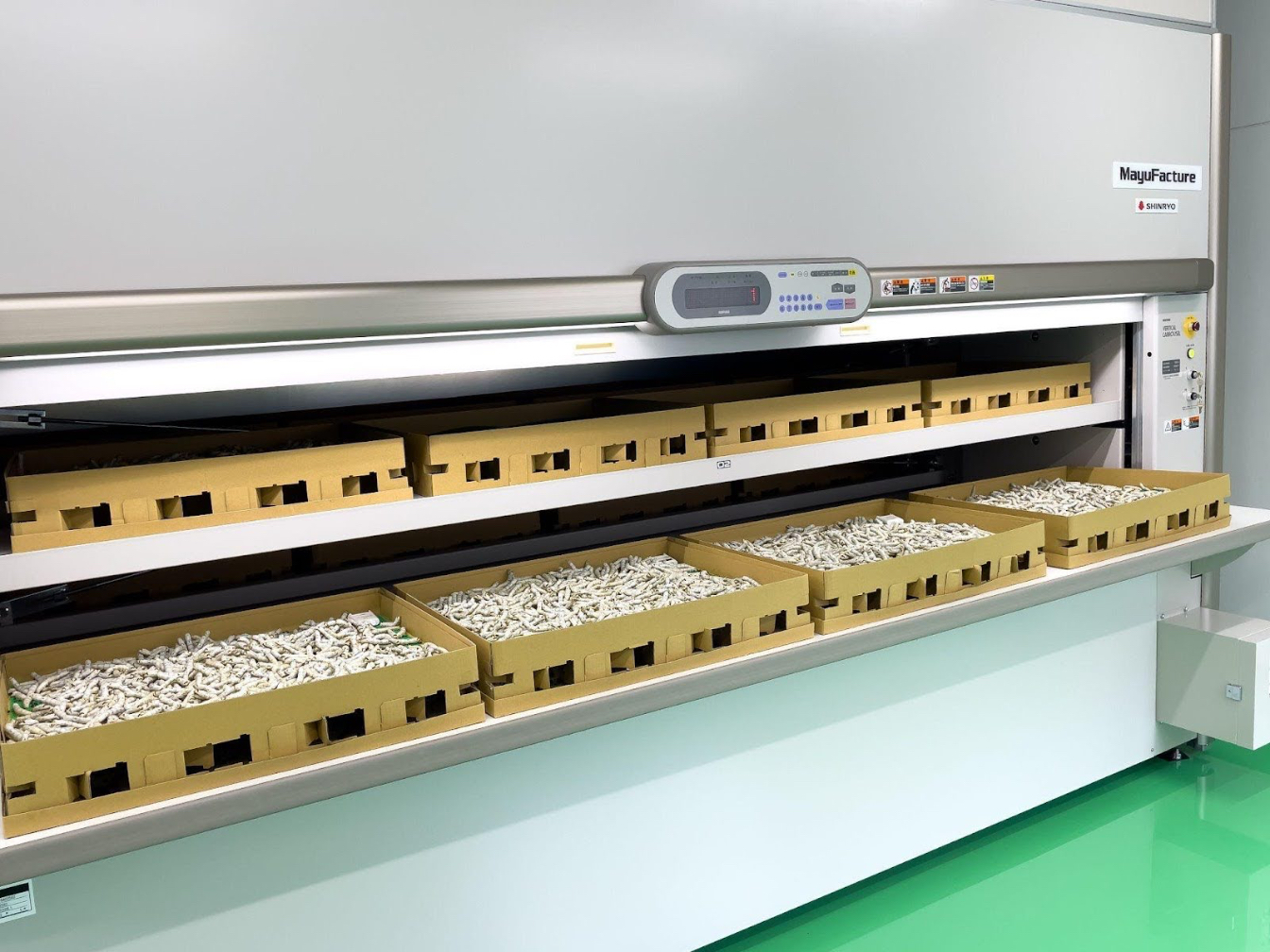
To increase sericulture productivity, many issues need to be solved. For example, silkworms are vulnerable to infectious disease, which kills around three in ten worms before they can spin cocoons. To help prevent this, trays in which the larvae are reared must be quickly cleaned of feces and dead silkworms that cause contamination. However, each time the staff enters the room, they can potentially bring in germs and spread disease.
One of Kawai’s innovations was to automate some of the work previously done by farmers, such as cleaning and feeding. With the help of local silkworm farmers and an air conditioning equipment manufacturer, he has produced the MayuFacture, a device that can maintain and control a clean rearing environment for silkworms. The company had previously developed a device that managed and optimized temperature and humidity to encourage egg hatching. United Silk Company’s “smart sericulture system” combines this and the MayuFacture to automate the process from hatching to rearing silkworms, thus boosting silkworm mass production.
“It would be impossible to create hundreds of sericulture farms across Japan,” says Kawai. “But if one company turns their sericulture operation into a factory, they can supply as much silk as 1,000 [small-scale] producers.”
As global demand for silk increases, and particularly since around 2015, more and more Japanese companies have entered the sericulture business. Recently in May 2022, United Silk Company started up a plant equipped with the MayuFacture device and raw silk processing equipment.

The company’s system produces about 12 times as many silkworms per unit of area as traditional sericulture. Elsewhere in the world, there are efficiency improvements in sericulture, such as the use of conveyor belts, but due to the knowledge and technical skill required, United Silk Company is the only company that has employed DX to produce a system that covers the entire sericulture process.
Using DX, the company had been able to implement thorough hygiene both in the factory and within machinery, enabling it to collaborate with various other industries, such as food. The company is currently focusing on business development in the medical and biotechnology fields using fibroin, a protein extracted from cocoons that is said to have heat retention and cell regeneration properties. The company has launched a range of products that contain fibroin-rich silk powder, including shampoos, hair treatments, body soaps and body creams.
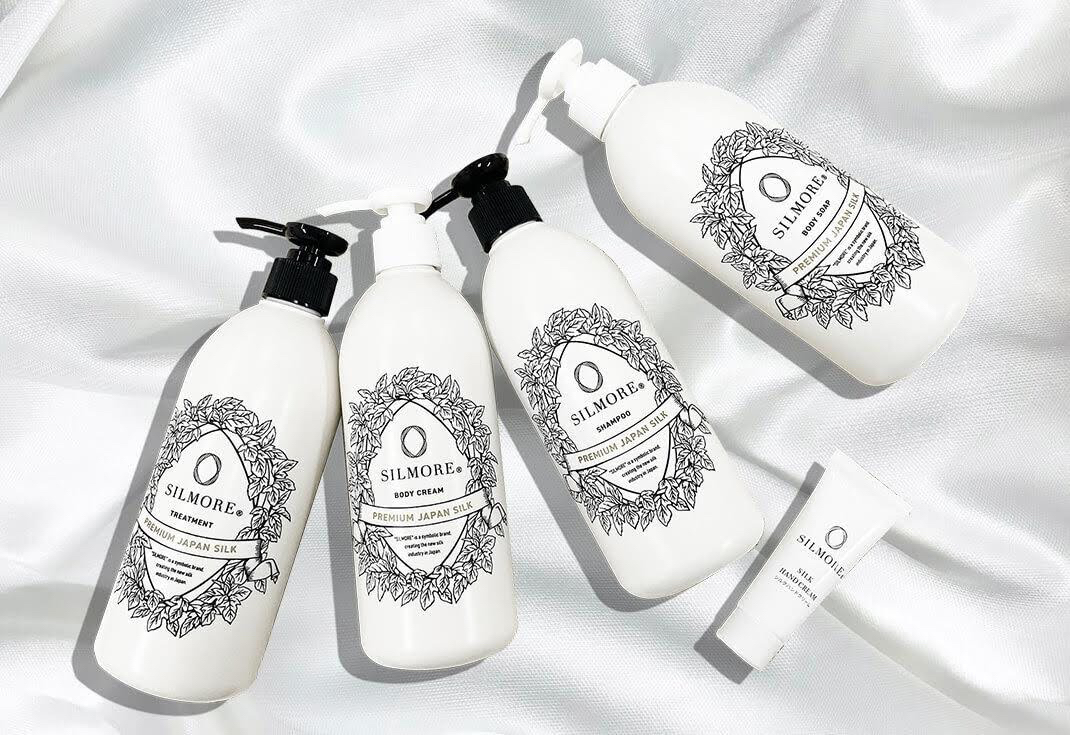
Kawai also believes that silk has great potential in the food industry, even able to improve the taste of food. For example, if fibroin is added to bread, it traps water and helps keep the bread moist. However, silk has yet to make an impact on the fields of food tech and health tech overseas. “When it comes to the supply of textile silk, we can’t compete with mass production in China and India. I think that the areas where Japan can make its presence felt will be food, cosmetics, and pharmaceuticals,” says Kawai.
To help solve the serious future food and protein shortages facing the world, the company is working to spread its technology to regions with strong food tech sectors and participating in trade shows.
The company places emphasis on being a “global startup” as it pursues overseas expansion. Locally, it contributes to regional revitalization, but it also maintains global-standard quality and manufacturing. Its mission is to provide the world with safe and reliable made-in-Japan silk that also pays attention to traceability and animal welfare.To that end, it has partnered with a New Zealand company that has developed technology to determine the origin of goods by analyzing the elements they contain. By adding a “Japan Silk” fingerprint to goods, United Silk Company hopes to appeal to consumers around the world who place importance on traceability.
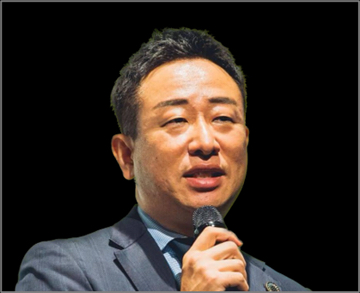
“Before, there have been concerns about child labor and forced labor in the places where goods such as cotton and cocoa are produced, but in future there may be questions about the background to silk production too, asking whether it is environmentally friendly, safe and reliable,” says Kawai.
“Even if that happens, I want to proudly supply the world with Japanese silk that has been produced in an environmentally and ethically sound way. I want to put this forward as one solution to the many problems facing the world.”
United Silk Company is also looking to apply the technology they currently use for food and cosmetics to plastic-free packaging; for example, replacing the plastic packaging of their own cosmetics products with sustainable silk-derived packaging that contains fibroin.
Translated by: Tony McNicol
Top page: United Silk Company
For inquiries regarding this article, please contact jstories@pacificbridge.jp
***
Click here for the Japanese version of the article


![[Tokyo Updates] Old and Full of Potential: Why a Swedish Model Is Reviving Abandoned Houses in Tokyo](https://storage.googleapis.com/jstories-cms.appspot.com/images/1732603609687d6b0a861ef75d954729578323092323fe00ad55e-thumb-1600xauto-10186_smallthumbnail.jpg)
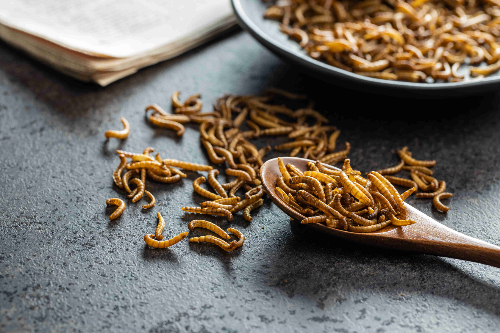
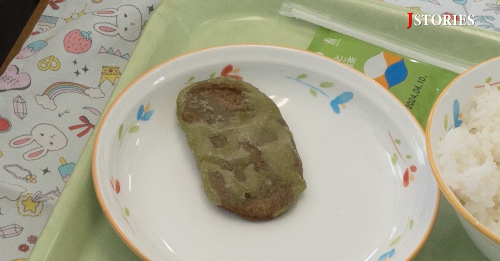

![[Podcast] Japanese technology to supercharge human fertility (Part 3)](https://storage.googleapis.com/jstories-cms.appspot.com/images/1766558713084place-for-scientific-research-2025-03-07-14-08-49-utc%20(1)_bigthumbnail.jpeg)
![[Interview: Part 2] A digital approach to tackle child hunger in Japan with dignity](https://storage.googleapis.com/jstories-cms.appspot.com/images/1766130666509unnamed_bigthumbnail.jpg)
![[Podcast] Japanese technology to supercharge human fertility (Part 2)](https://storage.googleapis.com/jstories-cms.appspot.com/images/1765863548035unnamed-7_bigthumbnail.jpg)
![[Podcast] Japanese technology to supercharge human fertility (Part 1)](https://storage.googleapis.com/jstories-cms.appspot.com/images/1765440905082unnamed_bigthumbnail.jpg)
_bigthumbnail.jpeg)




![[Interview] When digital and physical worlds meet](https://storage.googleapis.com/jstories-cms.appspot.com/images/1747974430456unnamed-2_smallthumbnail.png)

![[Interview] How Japanese musician Grover turned his passion of ‘sound’ into a health-tech startup](https://storage.googleapis.com/jstories-cms.appspot.com/images/1746181078493R7__1407_smallthumbnail.jpg)


_smallthumbnail.jpeg)

![[Interview: Part 1] From nourishing souls to feeding the hungry](https://storage.googleapis.com/jstories-cms.appspot.com/images/1763695595492unnamed_smallthumbnail.jpg)

